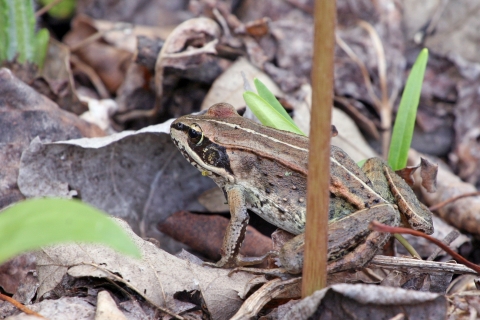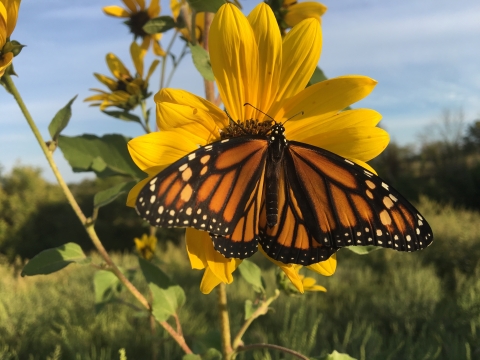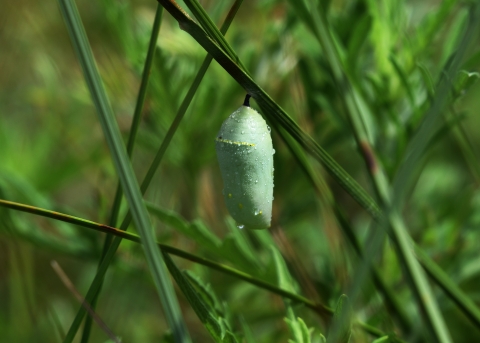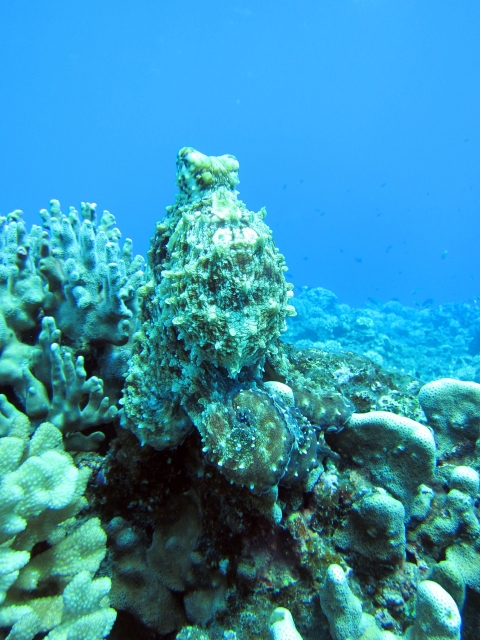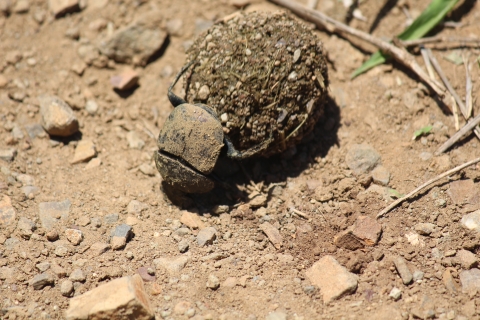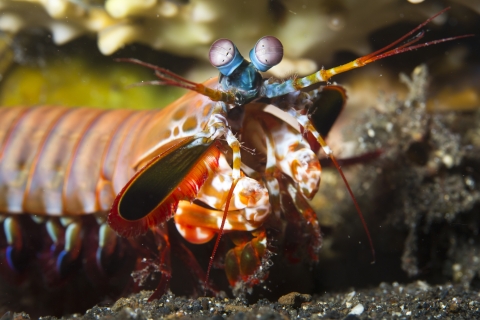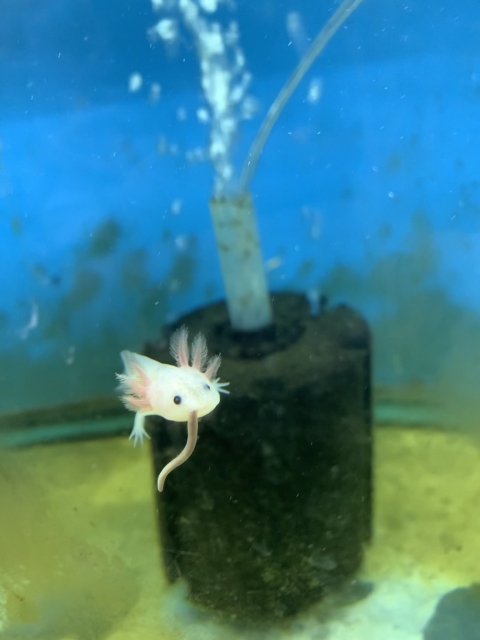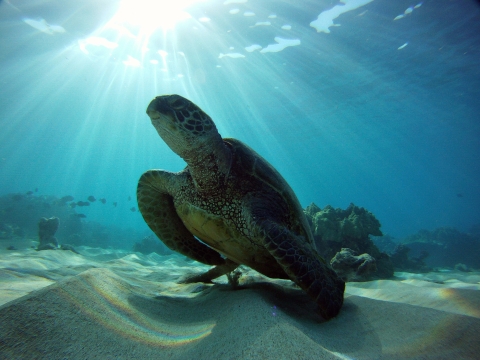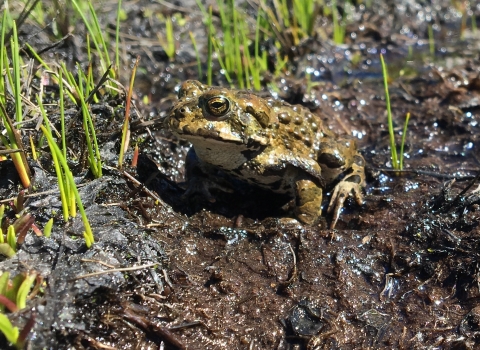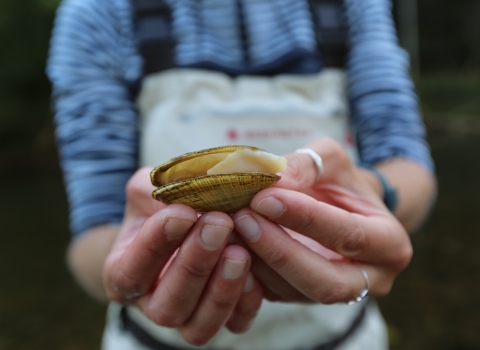The critter world is full of magical, mystical things. From frogs that can freeze, to shrimp with super-strength, wildlife sometimes feels as if it has been pulled from a storybook. Wonders both explained and unexplained fill the enchanted earth, proving Lord Byron, author of Don Juan, right: “Truth is stranger than fiction.”
Frozen in time
Our fragile human bodies are susceptible to frostbite in freezing temperatures, so we layer up to protect ourselves. It is hard to imagine that some critters not only survive a freeze but become one with it. Take wood frogs, for example. These awesome amphibians spend the winter hidden in leaf litter. What makes them magic is their ability to freeze 65% of their bodies and survive to see the spring.
Wood frogs have special proteins in their blood that causes it to freeze first. At the same time, their livers produce glucose, a syrupy sugar that fills the cells. This syrup prevents the inside of the cell from freezing and binds water molecules to prevent dehydration. The water outside the cells, however, still freezes, turning the frogs into icy stone.
Once glucose has been successfully transported around the body, the frogs’ hearts stop beating, and all other organs shut down. As the weather warms up, wood frogs thaw from the inside out, starting with the heart. This can happen several times throughout the winter. Scientists, however, are completely stumped as to what makes the heart start beating. Could it be magic?
Other critters that can survive while frozen in time include turtle hatchlings, iguanas, woolly bear caterpillars, and some types of beetles.
Shapeshifters
Butterflies are arguably the most iconic shapeshifters in the animal kingdom. In their lifetimes, they will undergo total transformations, turning from creepy crawly caterpillars into winged wonders.
Many of us learn about the life cycle of butterflies in grade school, but few know what really happens within a chrysalis. It’s a common myth that caterpillars turn entirely to goo within this hard outer casing.
In fact, caterpillars already possess the majority of organs and structures (like eyes, wings and legs) needed to become butterflies. These structures remain intact in the chrysalis, while modifications are made to prepare for life as butterflies.
Undergoing a much less permanent transformation, cuttlefish and octopuses can shapeshift into their surroundings, thanks to three specialized layers of skin. The lowest level serves as a reflective background for the upper two. The middle layer bounces light, making colors shimmer. Finally, the outer layer employs spots of pigment, much like the pixels on a screen, to create patterns. These layers work together to create a single picture.
Cuttlefish and octopuses also can change the three-dimensional texture of their skin, deepening the deception. Remarkably, they don’t always change to match their immediate background. Instead, they will imitate the objects they see nearby, like rocks and algae.
Believe it or not, octopuses and cuttlefish are colorblind. So how do they know what color to adopt? The truth is, we don’t know for sure. One idea is that they can feel color. Both animals have a special chemical in the tiny fibers on their arms that allows them to sense light. This may help them determine color from the changes in wavelength of light reflected from a surface.
It’s also possible the “u” shape of their pupils allows them to perceive differences in color. Their vision blurs when viewing white light because it reflects all colors. Primary colors, like red and yellow, however, appear in focus.
Super strength
No one does super strength quite like insects. These small-scale critters pack some big-time power. Take a look at horned dung beetles. In strength studies these tiny tanks were able to pull more than 1,000 times their bodyweight. For perspective, an average person would need to lift two fully loaded 18-wheeler trucks to match that level of strength.
Speaking of strength, mantis shrimp will make you rethink what it means to be shrimpy. They are, pound for pound, one of the strongest animals in the world. Using the clubs at the ends of their forelegs, these crustaceans pack a punch of 100 times their bodyweight — the strongest self-powered strike of any animal.
These strikes are not only powerful, but incredibly fast. The mantis shrimp can strike their prey at a speed similar to a .22-caliber bullet. That’s 50 times faster than the speed of a blink! The strike of this shrimp is so quick that it causes vapor bubbles to erupt around the club, effectively doubling the power of the punch.
Regeneration
Salamanders and lizards are known for their incredible ability to remove and regrow limbs when injured or avoiding predators. Take for example the axolotl. These aquatic salamanders can not only regrow limbs but also replace their spinal cords, hearts, and other organs.
After the wound is clotted, their skin cells rapidly divide and multiply to cover the site. As they do, the cells beneath that layer also rapidly divide and multiply forming a cone-shaped mass of generic cells. One can think of them as a blank slate, not intended for any specific structure structure
Something temporarily or permanently constructed, built, or placed; and constructed of natural or manufactured parts including, but not limited to, a building, shed, cabin, porch, bridge, walkway, stair steps, sign, landing, platform, dock, rack, fence, telecommunication device, antennae, fish cleaning table, satellite dish/mount, or well head.
Learn more about structure . As they divide and multiply, the cells regain their identity as bone or muscle. Eventually the structure becomes a perfect copy of the limb lost.
Scientists are studying this phenomenon in axolotls to learn to regrow human limbs. Limb loss affects nearly two million people in the United States. The “magic” of the axolotl may become miraculous, potentially changing the lives of many.
Immortality
Only the most powerful magic can cheat death. Although humans have to grapple with their inevitable passing, there are a few animal species that can theoretically avoid this fate.
Unlike birds and mammals, turtles' risk of death does not increase as they age. Of course, they still die from injuries and disease, but scientists think that, if they can stay healthy, turtles can stop aging all together. While we may not know if they are immortal, we do know that some species of turtle can stave off death for an extremely long time. Their magical ability may provide insights into slowing human aging.
The aptly named immortal jellyfish can actually reverse its life cycle. When injured, starving, or in physical distress, these tiny jellyfish—no bigger than a pencil eraser—essentially curl in on themselves, retracting their tentacles and losing the ability to swim. They then settle on the sea floor. Over the next 24-36 hours, their adult cells are reprogrammed to the previous life stage. This allows the jellyfish to regrow into entirely different bodies. The cycle can be repeated, allowing them to theoretically live forever.
Curiouser and curiouser
Each year, we discover new species, adaptations, and wild wonders, expanding our understanding of the magic of our wild world. These critters and their powers prove that there is nothing in this world more magical than nature.

